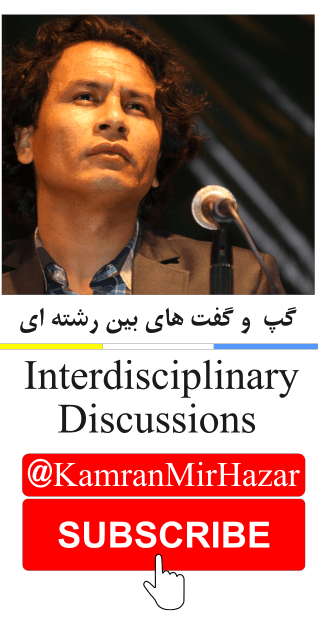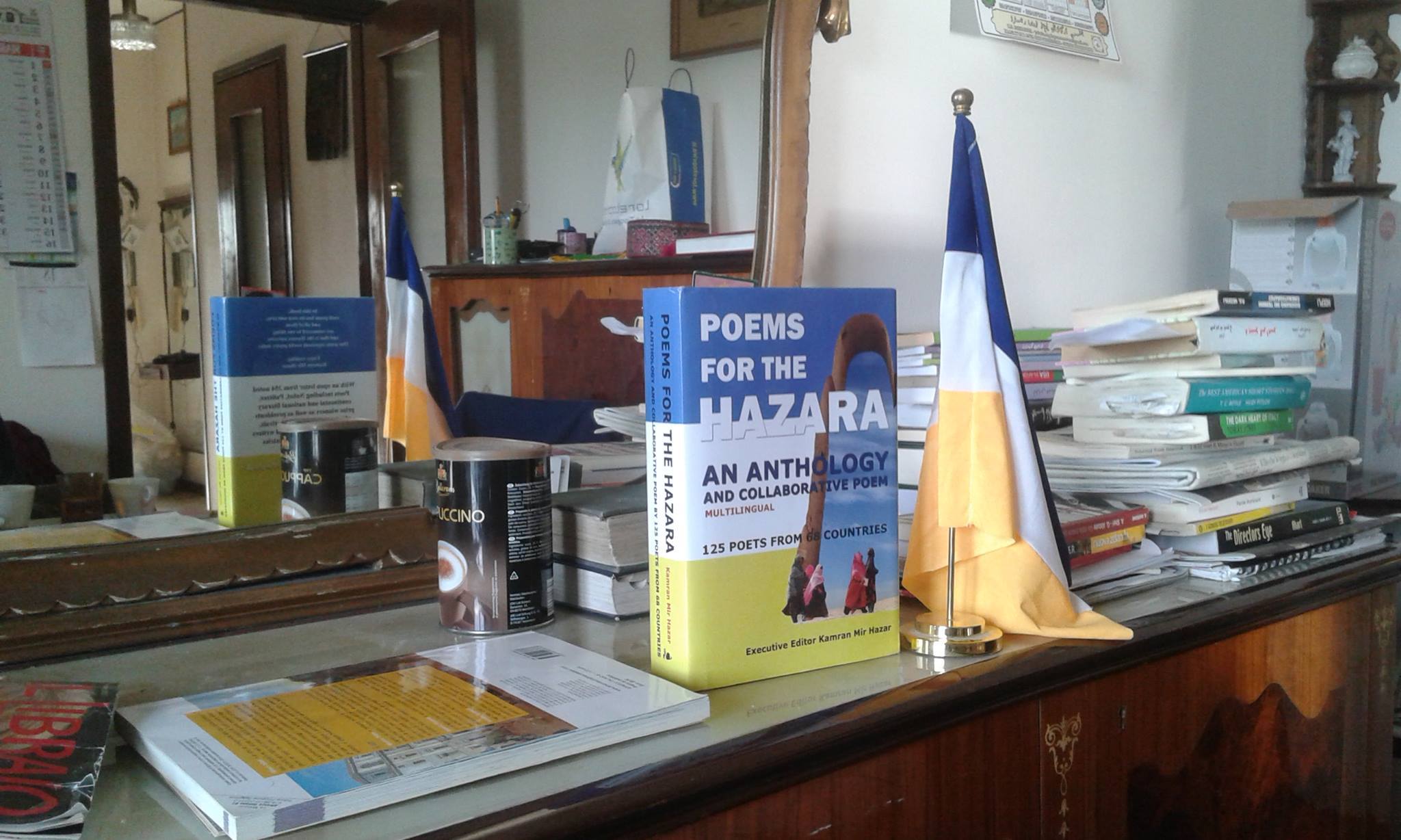
The Hazaristan Flag: Meaning, Symbolism and the Hazara Identity
Exploring the Yellow, White, and Blue of Hazara National Identity
Reading time: (Number of words: )
Imagine the heart of Central Asia, a land carved by towering, jagged mountains that hug hidden valleys, where whispers of ancient lives sleep beneath layers of snow. Here, a flag ripples with a quiet strength – the Hazaristan flag. It’s not just a pretty design for a country that’s still finding its place on the map; it’s a living, breathing story of a people. The Hazara, who’ve faced down centuries of hardship, haven’t just survived – they’ve held onto their dignity, their memories, their dreams. This tricolor – the bright yellow of the sun, the pure white of the snow, and the vast blue of the sky – it’s the very spirit of who they are.
More Than Just Colors: How a Flag Became a Song of Revival
Back in 2013, Kamran Mir Hazar, a thoughtful soul, gave this flag its form on Kabul Press, a digital haven where Hazara voices could finally be heard. What started as a simple design blossomed into something much bigger – a cultural comeback. Think of it: this flag’s meaning soared when it graced the cover of “Poems for the Hazara,” a collection of voices from all over the world – 125 poets from 68 countries, all lending their words to the Hazara story.

The photo on that cover, snapped by Najibullah Mosafer, is something else. It shows the flag reaching up towards the sky with the shattered remains of the Buddha of Bamiyan in the background. That site isn’t just an old monument to the Hazara; it’s a raw wound, a place where both the Taliban’s destruction and centuries of trying to erase their existence meet. Seeing the flag there, it’s like a visual poem: out of destruction, something new is being created; where there was silence, a voice is rising; in the shadows, a light is pushing through.
Colors That Speak Volumes: The Heart of the Tricolor
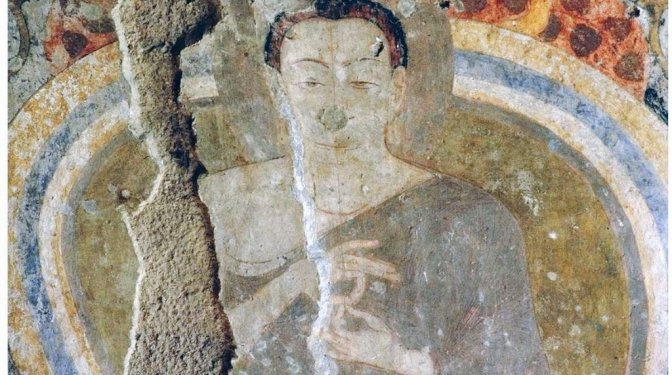
Each shade on the Hazaristan flag isn’t just a random pick. It’s tied to the very ground they walk on, the culture they live by, and even how they see the world. These colors don’t just stand for things; they are a statement of being, a way of saying, "We are here, and this is why."
💛 The Sun’s Golden Promise: Heritage, Roots, and a Hope That Won’t Fade
That bold yellow at the bottom? That’s the sun of Central Asia, beating down on the golden land of the Hazara, from the wide-open meadows of Uruzgan to the ancient cliffs of Bamiyan. It feels like the warmth of their traditions, the richness of the stories they tell and the art they create, the very light of who they are that just refuses to dim. If you look back, that earth has always been sacred. It wasn’t just about growing food; it fed their spirit, their sense of community, their pride, and their responsibility to the land. And just like the ochre in those incredible old oil paintings in Bamiyan, that yellow feels like it’s been part of their story forever. You even see that vibrant yellow pop up in their traditional clothes – it’s just part of who they are.
🤍 The Snow’s Quiet Strength: Integrity, Toughness, and a Peaceful Fight
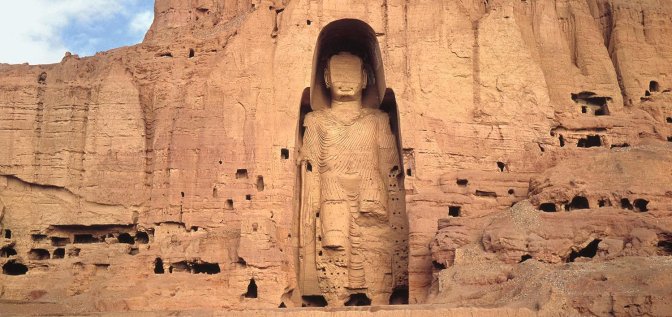
That crisp white in the middle? Think of the winters in Hazaristan – harsh, yes, but also breathtakingly beautiful. That snow isn’t just cold; it’s like a shield, and it teaches you things: how to be strong inside, how to be pure in spirit, how to just endure. The white highlands around places like Nili and Ghazni aren’t just scenery; they’ve shaped the Hazara character – making them stand tall, unbending, and resilient. And it’s like those soft white tones you see in the old oil paintings of Bamiyan that show a kind of inner wisdom, a clear light. On the flag, that white speaks of fighting for what’s right without violence, of having a clear moral compass, and of the quiet strength it takes to simply survive. Even when you look at the horizon where that big blue sky meets the land, there’s often that bright, almost white line – it’s all connected.
💙 The Sky’s Endless Embrace: Hope, Memory, and a Spirit That Can’t Be Held Down
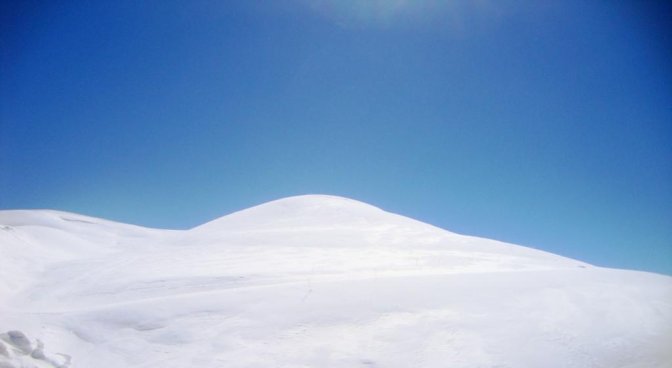
That deep blue at the top? That’s the huge sky stretching over places like Daykundi, Bamiyan, Ghazni – everywhere their ancestors lived, worked the land, shared their beliefs, and told the stories that still live on. It’s the same blue you see in those amazing 7th-century oil paintings in Bamiyan, some of the oldest in the world – it feels divine, peaceful, like the vastness of the cosmos. For the Hazara, that blue isn’t just about being free; it’s about their consciousness, a mind that won’t be boxed in by borders, whether they’re drawn on a map or in someone’s head. It’s a spirit that just keeps reaching.
Hazaristan: A Homeland Etched in Time

To really get what the flag means, you’ve got to understand the land it speaks for – Hazaristan. This isn’t some made-up place; its roots go way back in history, in the very shape of the land, and in the hearts and minds of the Hazara people. Back in the late 1800s, a British guy named Henry Walter Bellew described Hazaristan stretching far and wide. This land, once its own, became a target, especially during the brutal rule of Abdul Rahman Khan, whose late 19th-century actions against the Hazara were devastating, leading to mass killings, forced moves, and the breaking up of their ancestral territory.
The Hazaristan Charter: A Roadmap to Revival
The idea of Hazaristan isn’t just looking back with longing. It’s been put down in a fundamental document called the Hazaristan Charter, a kind of moral compass for their national rebirth. Its articles aren’t just political statements; they’re about what’s right and wrong, about their history, about justice, and about deciding their own future. Article 20 of that Charter makes it clear: Hazaristan is the land of the Dai (their traditional communities), and they’re the ones who define its borders. It also says that any parts of their land taken through violence and injustice are still considered part of Hazaristan. This shows that their claim to the land isn’t about taking someone else’s; it’s about putting things right, about recognizing their ancient roots. And by saying this, the Charter gives the flag even more weight – it’s not just a symbol; it has a kind of legal and moral backing.
From the Ground Up: This Flag Belongs to the People

Unlike a lot of flags that are just handed down from the government, the Hazaristan flag grew from the people themselves. When Kamran Mir Hazar asked Hazara communities everywhere to print it, sew it, wave it, it sparked something real. You saw it in protest marches, at universities, on social media, on handmade signs – this flag wasn’t traveling through official channels; it was moving through the shared will of the Hazara diaspora. Every time someone made one, it was an act of saying, "We’re still here. We have a voice. We can’t be bought."
Official Recognition: The Charter Speaks Again
The flag got its official stamp in Article 37 of the Hazaristan Charter, which declares it the national symbol of the Hazara people. It says that its colors and how it looks should be respected and promoted everywhere – officially and culturally. This took the flag from being just a cultural symbol to a national one with the weight of their own foundational law behind it, putting it not just in their hearts but also in their vision for the future.
Poetry, Protest, and Standing Together with the World
When that flag appeared on the cover of “Poems for the Hazara,” and when hundreds of poets from all over the world wrote an open letter to leaders, it showed how art and activism can come together. The flag became a rallying cry not just for the Hazara but for anyone standing against violence and the erasing of cultures. That book wasn’t just poems; it was a political act, a global record of outrage and solidarity.
The Hazara Stateless Nation, A People Who Refuse to Be Silent
The Hazaristan flag doesn’t fly from embassies or lead grand parades. It doesn’t get signed onto treaties. And yet, it’s one of the most powerful national symbols today – precisely because it comes from struggle, from poetry, from memory. It’s like it’s sewn from the sky that no one can fence in, the snow that no one can buy, and the sun that no one can put out. It speaks in the language of the mountains and those who’ve sacrificed, of ancient art and bold statements. It’s a living identity – you see it in Hazara homes, it’s etched in the hearts of those who’ve been forced to leave, and it flies defiantly in the winds of history.
The sun. The snow. The sky.
This is Hazaristan, the Hazara country.
Frequently Asked Questions
-
The Hazaristan flag features three horizontal bands: blue (top), white (middle), and yellow (bottom).
-
The bold yellow at the bottom represents the sun of Central Asia, the golden land of the Hazara, the warmth of their traditions, the richness of their stories and art, and the enduring light of their identity. It connects to the sacredness of their land and the ochre found in the ancient oil paintings of Bamiyan.
-
The crisp white in the middle embodies the harsh but beautiful winters of Hazaristan, representing inner strength, purity, endurance, and a quiet, nonviolent resistance. It’s also linked to the soft white tones in the ancient Bamiyan oil paintings, suggesting wisdom.
-
The deep blue at the top mirrors the vast sky over Hazaristan, symbolizing ancestral memory, hope, and a spirit that cannot be confined by borders. It echoes the profound blue found in the ancient 7th-century oil paintings of Bamiyan, suggesting a divine and cosmic connection.
-
The Hazaristan flag was conceived in 2013.
-
The flag first appeared on Kabul Press?.
-
The flag gained significant symbolic weight when it was featured on the cover of “Poems for the Hazara,” a multilingual poetry anthology that amplified the voices and resilience of the Hazara people globally.
-
The Hazara are a people with a deep historical presence in Central Asia, known for their resilience, rich cultural heritage, and historical connection to the highlands of Hazaristan. Tragically, they have faced periods of intense persecution, including what many recognize as genocide and cultural genocide, aimed at their physical and cultural erasure. As Japanese poet and director of the World Haiku Association Ban’ya Natsuishi noted, "to our displeasure, the history of some people, like the Hazara’s is often distorted or destroyed. The Hazara people of central Asia overlapped various cultures; they enriched our civilization. Here we ardently dedicate our various poems in various languages to encourage the Hazara to restore their honor."1 The Hazara people continue to strive for recognition, justice, and the preservation of their distinct identity and history in the face of ongoing challenges.
-
Hazaristan, also known as Hazara Country, refers to the historical and ancestral homeland of the Hazara people in the heart of Central Asia, a land with deep roots in their identity and cultural memory.
-
According to the historical account of Henry Walter Bellew (1834-1892), the borders of the Hazara country, or Hazaristan, extends "from the border of Kabul and Ghazni to those of Herat in one direction and from the vicinity of Kandahar to that of Balkh in the other.”
-
The colors of the flag are deeply intertwined with the natural environment of Hazaristan: the yellow of its sun-drenched land, the white of its snow-covered mountains, and the blue of its expansive skies.
-
Bamiyan, with its ancient Buddhas and early oil paintings, is a crucial site for Hazara history and culture. The image of the flag rising against the ruins of Bamiyan symbolizes resilience, revival, and the enduring spirit of the Hazara people in the face of destruction and erasure.
-
The Hazaristan Charter is a foundational document outlining the principles for the revival of Hazaristan, emphasizing historical rights, justice, and self-determination for the Hazara people. It also recognizes the Hazaristan flag as a key national symbol.
-
Unlike many national flags imposed by governments, the Hazaristan flag grew organically from the Hazara people themselves, sparked by Kamran Mir Hazar’s call and embraced by the diaspora as a symbol of their identity and resistance.
-
For the Hazara diaspora around the world, the flag serves as a powerful symbol of their shared identity, their connection to their homeland, their resilience in the face of displacement, and their ongoing aspiration for recognition and justice.
Keywords: Hazaristan flag, Hazara flag, پرچم هزارستان، پرچم هزاره، بیرق هزارستان، بیرق هزاره، Hazara people, Hazara Nation, Hazaristan, Hazara country, Hazara stateless nation, Bamiyan, yellow symbolism, white symbolism, blue symbolism, cultural identity, historical landscape, oil paintings, poetry, resistance, Hazaristan Charter, diaspora, Central Asia, Hindu Kush, So-called Afghanistan, cultural revival, Hazara poetry, Hazara art, Hazara history.

Poems for the Hazara
The Anthology of 125 Internationally Recognized Poets From 68 Countries Dedicated to the Hazara
Order Now


